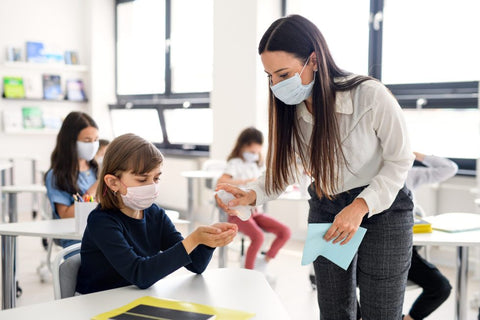The Plan for School? Flexibility
Tell us @tryverima your plans for the school year.
Parents, teachers, administrators, immunologists, epidemiologists and doctors on both sides are hotly debating the need for children to be in school for in-person learning versus the safety of students and teachers and the risks to their health. And like all hotly debated topics, it’s complicated and there is no one size fits all solution. Last month, our school district announced the plan for hybrid learning at the elementary schools and distance learning for the middle and high schools. Last week, in response to the continuous rising cases of the virus, the state said, schools can not open unless the county’s case numbers stop rising for 14 consecutive days. Some parents were livid, some despaired, some relieved, but regardless, many jumped into a tizzy to form their own cohorts, pods, find teachers, tutors and nannies because however we managed to muddle through last spring; it is neither sustainable nor desirable.

What we must understand is that zero risk of Covid-19 is not going to happen for a long while. So the debate then becomes, how do we move forward by mitigating the risk of infection/illness to levels we deem acceptable? I live in the Bay Area of California right near the San Andreas Fault, which means we get earthquakes. But, we make sure our homes are reinforced to code, we have emergency kits ready, we practice earthquake drills at schools and home, and it is a risk we accept. East coasters are all too familiar with the damage they face every year with hurricane season. We all take risks daily when we get in our cars, play sports, eat sushi or a medium-rare steak. But we take the necessary precautions to lessen those risks to levels where we feel comfortable. A dive joint’s sushi menu or football without a helmet are not good ideas. And neither is opening up schools when cases are surging. But let’s be clear, teachers are essential workers and similar to our frontline workers in hospitals, grocery stores and factories and plants, we need them to take on an acceptable amount of risk.


If a region’s numbers are low and stable, and schools are making the necessary accommodations to limit class sizes, form cohorts, increase ventilation/move classes outside, etc. Then yes, let’s give our children what they need. The key here is flexibility. We need to have a Plan A, B,C and D. And we need to manage our expectations that moving from Plan A to B,C or D WILL happen and that’s to be expected and it is okay. In other words, the plan is to be okay with changing the plan. We know all too well cases can surge within a couple weeks, and cases can also flatten and come down. We know that what is happening in LA is not what is happening in Omaha. We know in the Bay Area the numbers surged, then flattened, then decreased then surged. . . . If we know the plan is to shift, then we don’t feel disappointment when we have to shift. Our plans and expectations won’t come crashing down as schools switch from full-time to hybrid to distance and back to hybrid.

Similarly, we need to adjust our expectations for the length of time we will be on this roller coaster of change. People will wait patiently if they know how long they have to wait. It is the “indefinite” part that drives us nuts. We may gladly wait 30 minutes to eat at our favorite restaurant (pre-Covid), but if the host just shrugged and said, “I have no idea. . . hopefully 5 minutes, but maybe not at all tonight, “ then we would grow increasingly impatient as each minute past the 5 minute-mark ticked by, and most of us would probably not wait at all. If we thought this pandemic would be over and done with in a few months, we would be sorely disappointed and rightfully fatigued by now. We pace ourselves differently if we’re running a 5K versus a marathon. Where many moms I spoke with are struggling is with the indefiniteness of the current norm. It’s the not knowing for how much longer we need to be attempting to be successful at the impossible. The best we can do is going to have to be good enough. And the best we can do is to have several plans, be flexible enough to shift those plans and take each day as it comes.
We all know by now the importance of teaching our children the buzzwords of “grit”, “perseverance” and “resilience”. Well, here it is the (albeit unsolicited) real-world, months-long, teachable moment to model and talk about all these qualities as we model them for our children. And while we’re at it, let’s add “flexibility” to our list. It’s not going to be easy, but we never thought it would be, and it doesn’t have to be perfect. Be smart, stay safe, wear a mask and plan to change the plan.

